
Panteleimon Bridge is one of the bridges in the historical center of St. Petersburg.
This bridge is considered one of the most beautiful in the city.
The bridge spans the Fontanka River, and connects an Unnamed Island with the Summer Garden Island, which occupies the most beautiful park in the center of St. Petersburg - A summer garden with fountains and sculptures.
The name of the bridge "Panteleimonovsky", as well as the street adjacent to it, was given after the nearby Panteleimon Church.
Upstream of the Fontanka River from the Panteleimon Bridge is Laundry Bridge, below-Belinsky Bridge.
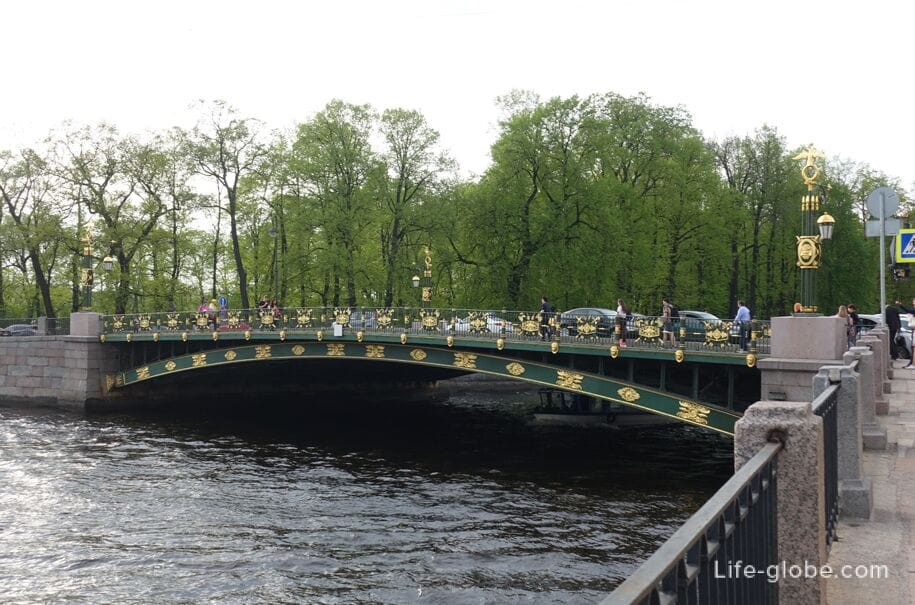
The Panteleimon Bridge has a total length of 43 meters and a width of 23.7 meters.
The bridge is a single-span metal structure of the arch type, consisting of 12 double-hinged sloping arches with parallel belts and arched posts supporting the elements of the roadway of the bridge. The abutments of the bridge are massive stone on a pile base, lined with granite.
The bridge has decorations made in the form of military paraphernalia, heads of jellyfish, double-headed eagles and wreaths of laurel leaves. The colors of the bridge are green and golden.
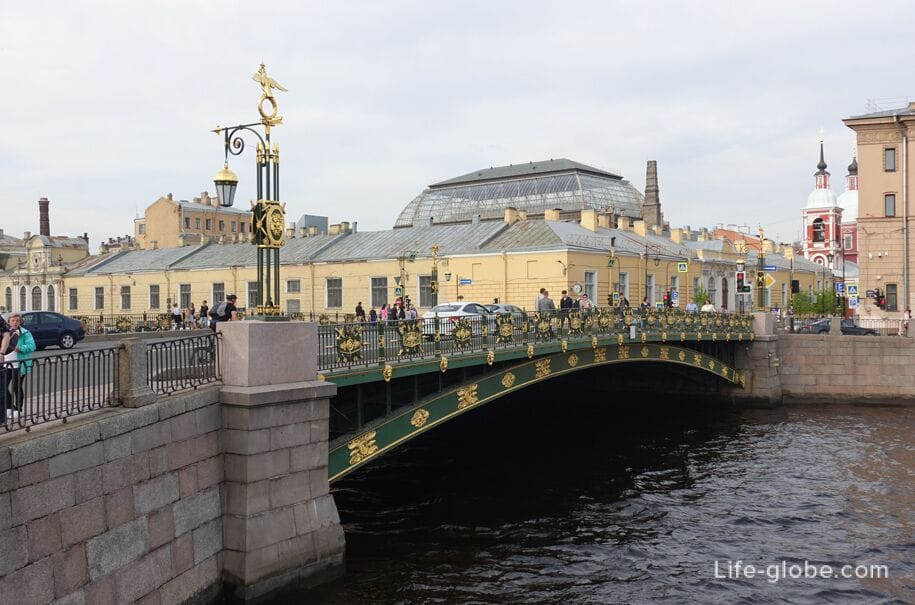
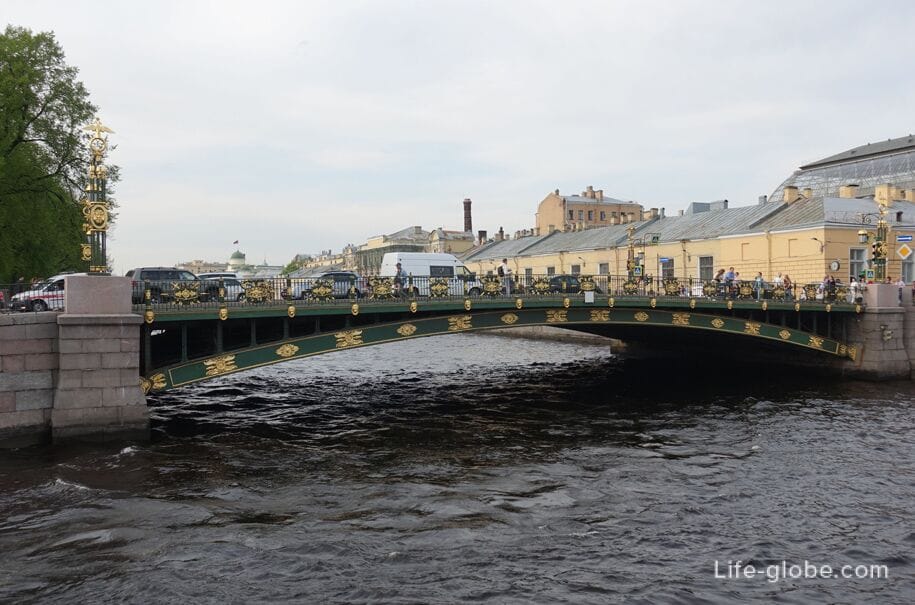
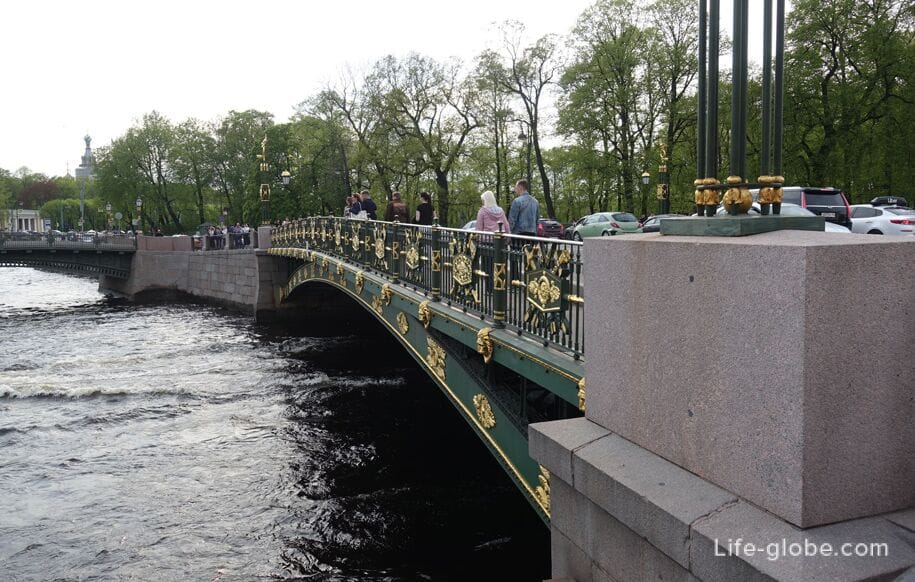
At the entrances to the bridge, on both sides of the bridge, there are floor lamps made in the form of bundles of spades, intertwined with wreaths and decorated with shields with military attributes.
Each floor lamp is crowned with a figure of a double-headed eagle, and a lantern in the form of a truncated octagonal pyramid is fixed on the bracket.
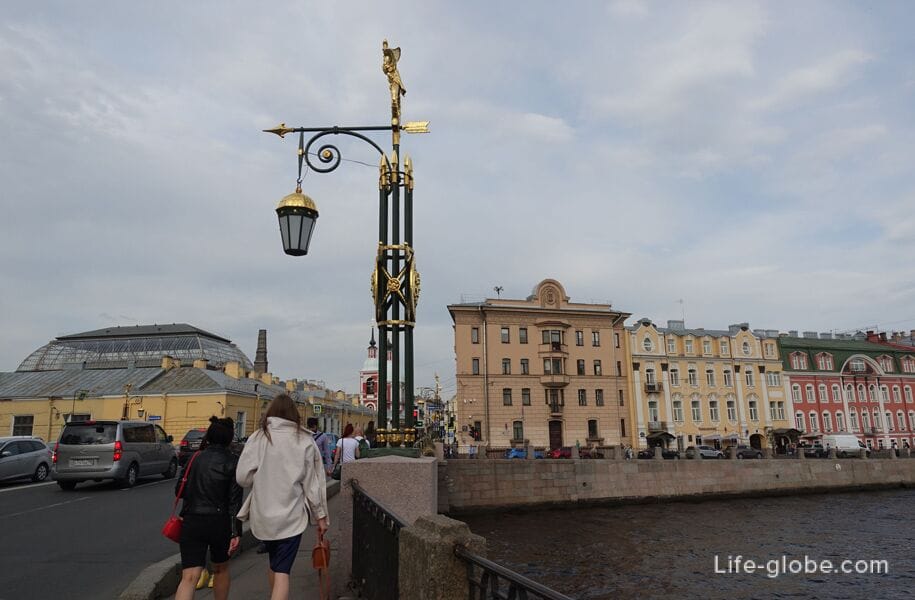
The railing of the bridge is cast iron artistic casting.
Each of the sections of the fences is decorated with a dart with an overhead shield, which is decorated with military attributes.
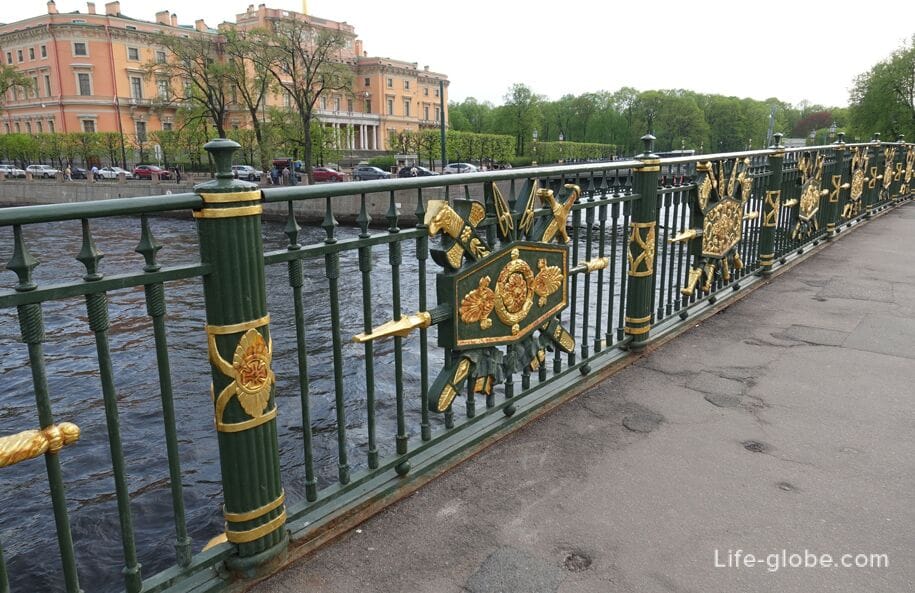
Panteleimonovsky Bridge is a roadway and pedestrian.
Pedestrian sidewalks are located on both sides of the bridge.
The roadway of the bridge is separated from the sidewalks by a curb.
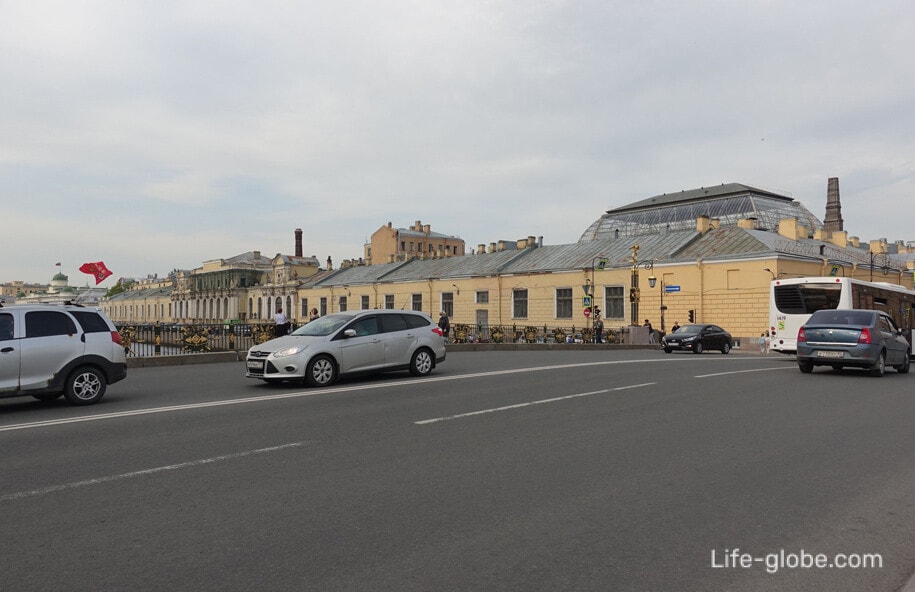
Next to the Panteleimon Bridge, near the neighboring 1st Engineering Bridge over the Moika River, on the side of the Fontanka River, there is one of the iconic sights of St. Petersburg - a small bronze sculpture "Chizhik-Pyzhik".
An interesting story about students is connected with the sculpture. Also, they say, the Chizhik-Pyzhik fulfills wishes. Learn more about the Pyjik-Chizhik, its history and signs...
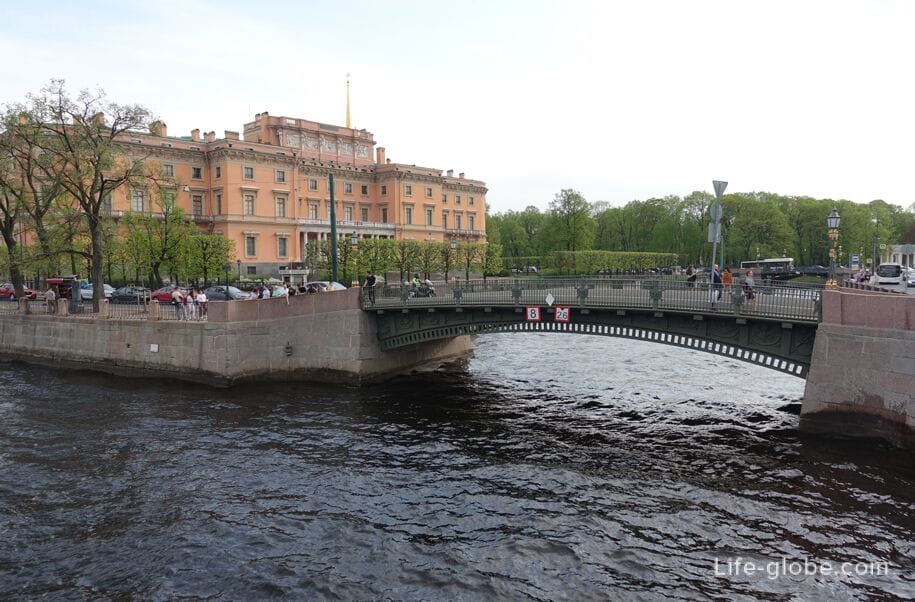
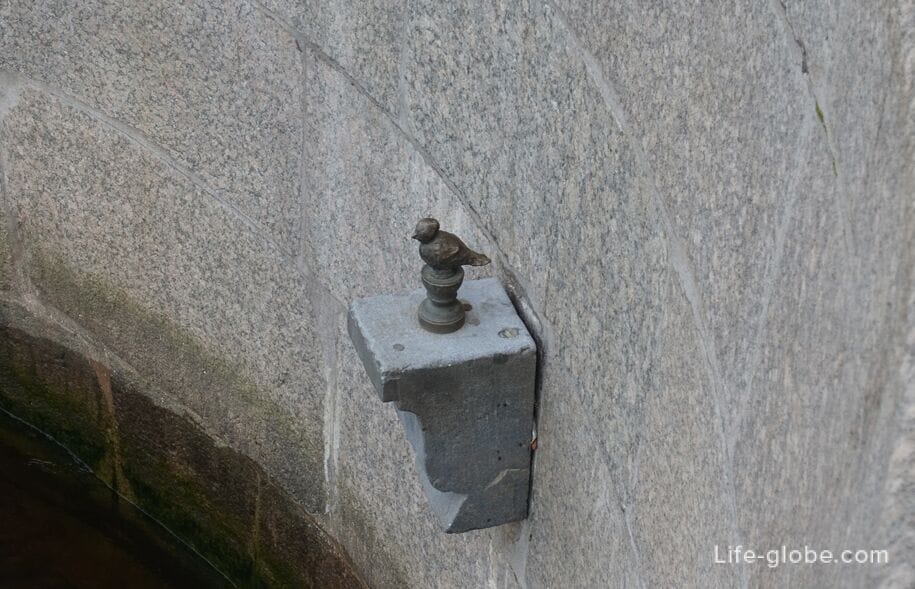
From the Panteleimon Bridge there are beautiful views of the Fontanka River, the river embankments, as well as the Salt Town, the Summer Garden, the Golitsyn Loft and the exquisite Mikhailovsky (Engineering) Castle is a former imperial palace, within the walls of which a museum is now located.
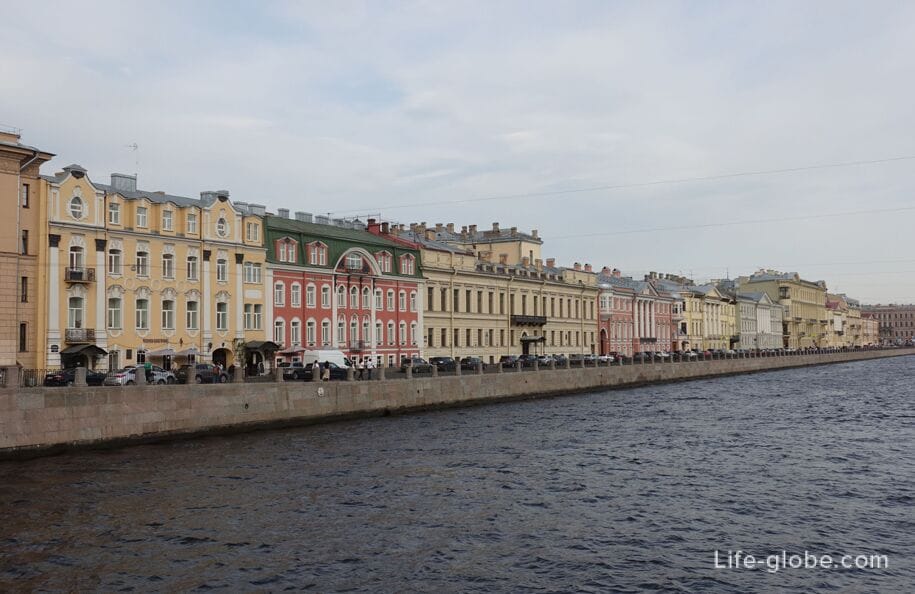
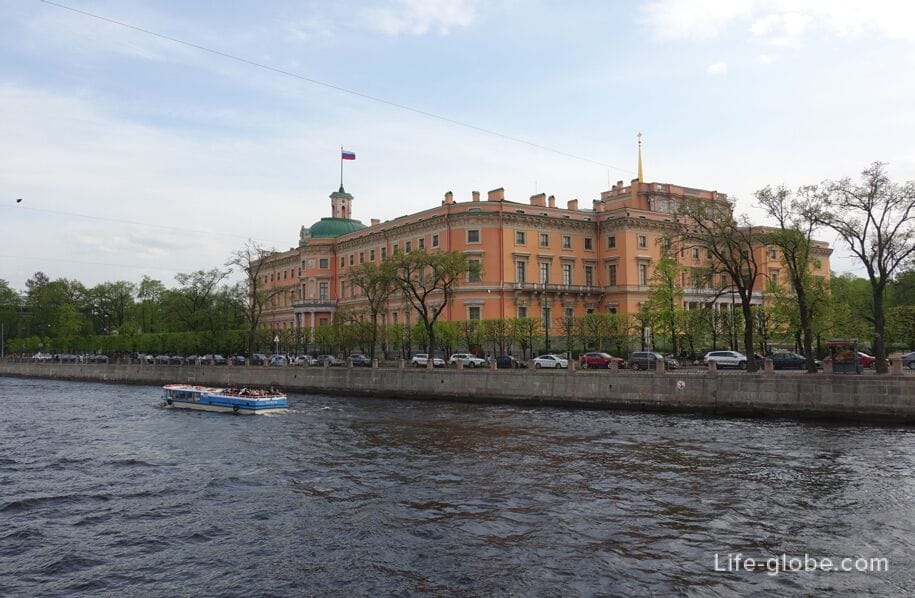
For the first time, the bridge at this place was built in 1725-1726 according to the project of the Dutch engineer Harman Fan Boles. It was a wooden bridge-aqueduct, through which water was supplied to power the fountains in the Summer Garden.
In 1777, after a flood and the destruction of the fountains in the garden, the aqueduct bridge was dismantled.
In 1748-1749, a new bridge in the Baroque style was built on this site, designed by architect F.B. Rastrelli.
In 1823-1824, in connection with the redevelopment of the area of the Field of Mars and the Mikhailovsky Castle, a chain bridge was built, the feature of which was richly decorated bridge supports. This bridge was dismantled in 1906 due to the collapse of a similar Egyptian chain bridge over the Fontanka River, which occurred in 1905.
In 1907-1908, a modern, single-span metal arch bridge was built on the site of the chain bridge. However, the Panteleimon Bridge received its full architectural appearance only in July 1914, when, according to the project of architect L. A. Ilyin, the bridge was richly decorated in the Empire style.
In 1925, in connection with the celebration of the 100th anniversary of the Decembrist uprising, the bridge was renamed the "Pestel Bridge". On October 4, 1991, the bridge was returned to its historical name "Panteleimonovsky".
During the history, various restoration and repair works were carried out on the bridge.
In 2000, as part of the "Bright City" program, an architectural illumination of the bridge was created.
From November 1833 to August 1834, not far from the Panteleimon Bridge, A. S. Pushkin and his family lived in a house on Panteleimonovskaya Street. "In St. Petersburg, at the Chain Bridge, opposite Panteleimon, in the house of G. Olivier," - this address is indicated in his letters to his wife from Boldin in the autumn of 1833.
Coordinates of the Panteleimon Bridge: 59°56'32.0" N 30°20'19.0" E (59.942222, 30.338611).
Nearest metro stations: "Nevsky Prospekt", "Gostiny Dvor", "Admiralteiskaya" and "Chernyshevskaya".
All accommodation facilities in St. Petersburg, including in the city center and more remotely from it, can be viewed and booked here